Text
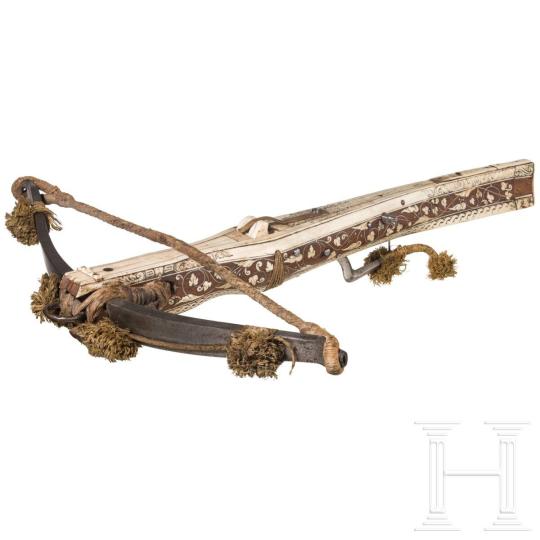
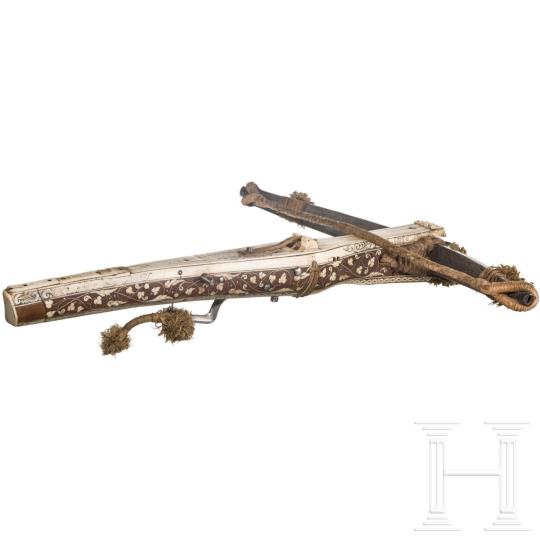
Bone inlaid crossbow, Germany, dated 1604
from Hermann Historica
596 notes
·
View notes
Text

Concept of a Ship of the line in distress, by Karl Simon Gustafsson, 2012
329 notes
·
View notes
Text
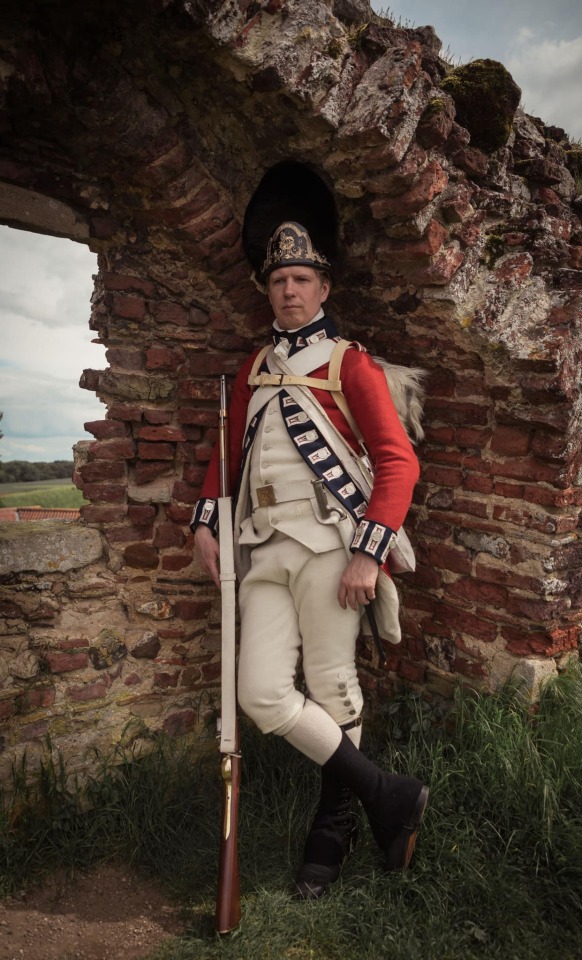

Reenactor Richard Marren's Royal Welch Fuzileer in full marching order, Boston, c. 1774. Photos from the 23rd Regiment of Foot, The Royal Welch Fuzileers 1743-1783 Facebook page.
#history#british army#military history#18th century#redcoat#american revolution#american war of independence#revwar#redcoats#23rd foot#royal welsh fusiliers
40 notes
·
View notes
Text
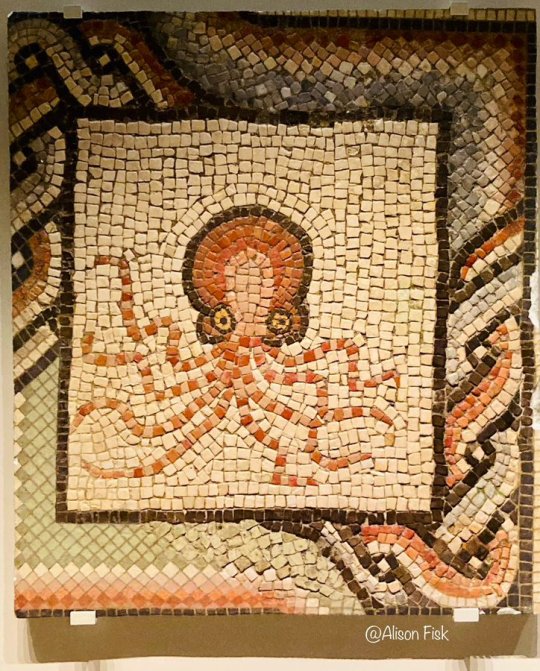
A charming little octopus from a Roman villa at Villaquejida, Spain, 2nd-3rd century AD. Museo Arqueológico Nacional, Madrid. Photo by Alison Fisk
554 notes
·
View notes
Text

Collection of bronze swords uncovered in Germany, circa 9th century BC
from The State Museums of Berlin
359 notes
·
View notes
Text
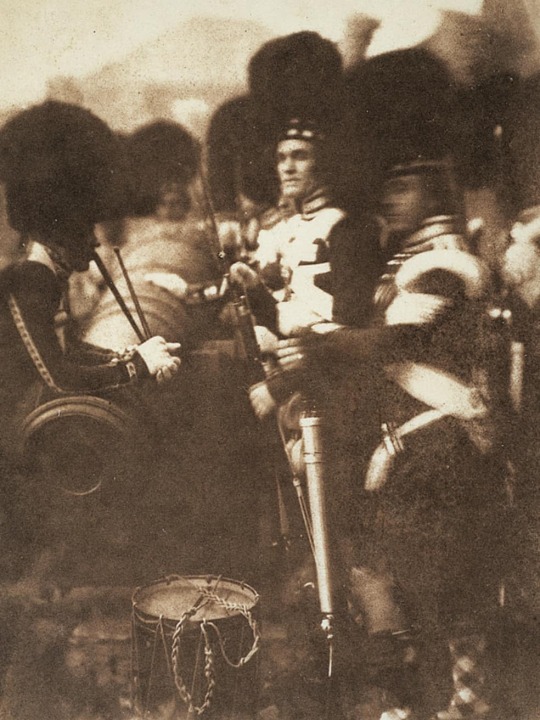
One of the oldest photographs of British soldiers, showing Scottish highlanders garrisoning Edinburgh Castle in 1846 (jury seems to be out as to whether they're the 42nd or 92nd Foot).
#history#british army#military history#19th century#edinburgh castle#edinburgh#scotland#scottish#scots#highlander#highlanders#kilt#kilts#scottish history
68 notes
·
View notes
Text



Shoutout to Fort Ticonderoga for, among many other things, their brilliant Seven Years War highlander impressions.
#history#british army#military history#18th century#redcoat#highland#Scottish#Scotland#scots#kilt#tartan#highlander#highlands#Scottish history#fort Ticonderoga
61 notes
·
View notes
Text

Detail of Hanoverian infantry on review in 1735, from The Review of the Hanoverian Army at Bemerode, 1735 by Joachim Niemeyer.
36 notes
·
View notes
Text

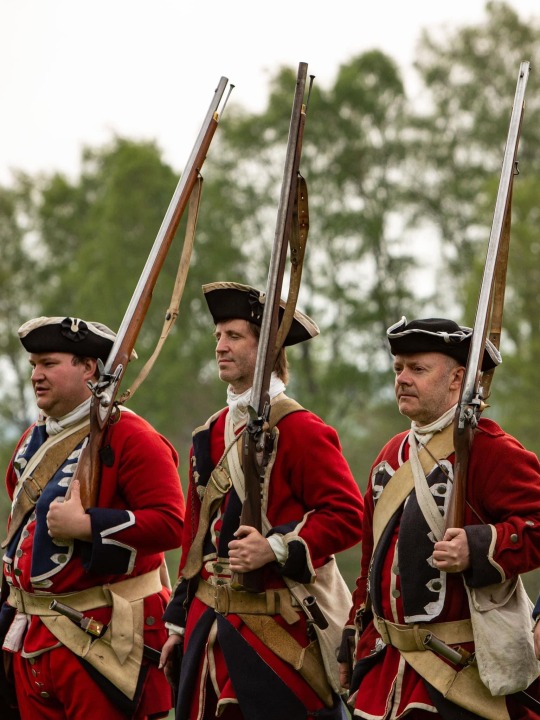
The Edinburgh City Guard, portraying the city’s militia garrison during the 1740s.
76 notes
·
View notes
Text


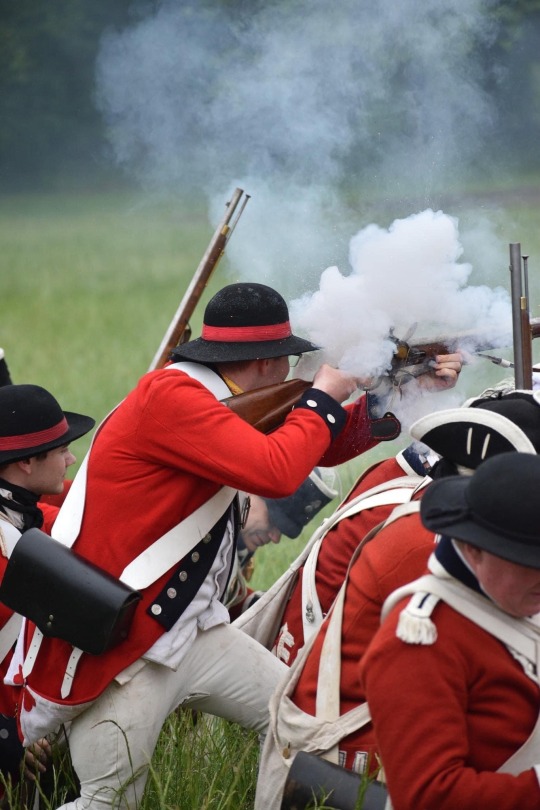

Part of the recent Mount Vernon Revolutionary War reenactment.
#history#british army#military history#18th century#american revolution#redcoat#american war of independence#revwar#redcoats
50 notes
·
View notes
Text
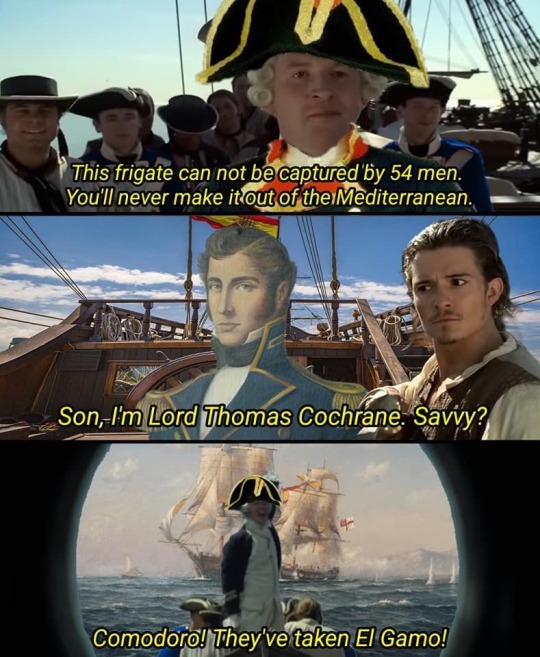
134 notes
·
View notes
Photo

This is what we used to do with pirates in my home town, Hamburg- heads off, nail it on a pole and then display it on the beach.
And this is by the way, the alleged real skull of the pirate Captain Klaus Störtebeker from 1401 © Museum für Hamburgische Geschichte
500 notes
·
View notes
Text
I’m late, but always reblog.
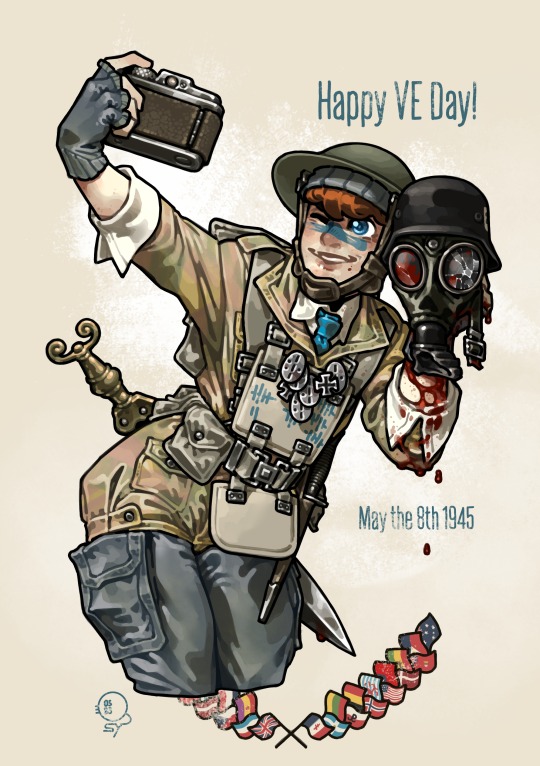


Happy VE Day !
Everyone who gets a day off, enjoy ! The first picture is available as a print, just DM me .w.
201 notes
·
View notes
Text
First Battle of Cape Finisterre
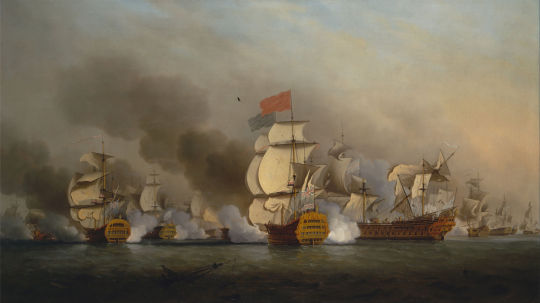
The First Battle of Cape Finisterre (14 May 1747) was waged during the War of the Austrian Succession. It refers to the attack by 14 British ships of the line under Admiral George Anson against a French 30-ship convoy commanded by Admiral de la Jonquière. The French were attempting to protect their merchant ships by using warships with them. The British captured 4 ships of the line, 2 frigates, and 7 merchantmen, in a five-hour battle in the Atlantic Ocean off Cape Finisterre in northwest Spain. One French frigate, one French East India Company warship, and the other merchantmen escaped.
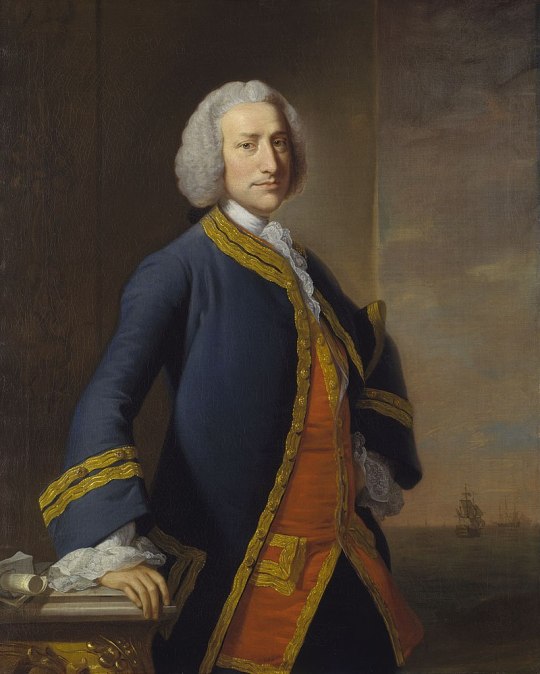
George Anson, 1st Baron Anson, most famous for his four year military circumnavigation around the world between 1740 and 1744.
France needed to keep shipping lanes open in order to maintain her overseas empire. To this end she assembled merchantmen into convoys protected by warships. Anson on Prince George and Rear-Admiral Sir Peter Warren on Devonshire had sailed from Plymouth on 9 April to intercept French shipping. When a large convoy was sighted, Anson made the signal to form line of battle. Rear-Admiral Warren, suspecting the enemy to be manoeuvring to promote the escape of the convoy, bore down and communicated his opinion to the admiral; the latter threw out a signal for a general chase.
Centurion under a press of sail, was the first to come up to the rearmost French ship, which she attacked severely, and two other ships dropped astern to her support. The action became general when three more British ships, including Devonshire, came up. The French, though much inferior in numbers, fought till seven in the evening, when all but two of their ships were taken, as well as nine East India merchantmen. The French lost 700 men killed and wounded, and the British 520. Over £300,000 was found on board the ships of war, which were turned into British ships.
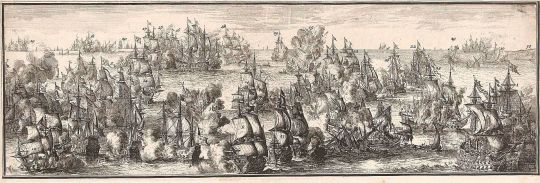
François de Grasse, later the famous Comte, was wounded in this first battle. He was taken prisoner among the crew and officers on La Gloire, which was captured.
Following his victory, Anson was raised to the peerage. The French assembled another, much bigger, convoy which set sail in October. After Edward Hawke's defeat of this fleet in the Second Battle of Cape Finisterre, the French naval operations were ended for the rest of the war.
According to American historian William Williamson's 1832 account, the battle was a "most severe blow to the French interests in America. Besides immense property taken, there were found on board … numerous articles designed for the Acadians and Indians."
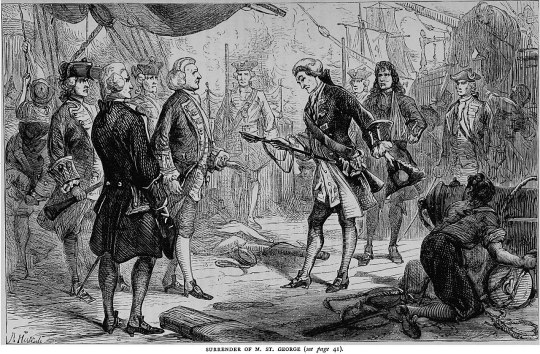
#history#military history#18th century#war of the austrian succession#royal navy#navy#tall ships#age of sail
42 notes
·
View notes
Text
The Battle of Langside
Fought on May 13th, 1568, the battle of Langside was fought just south of Glasgow, Scotland, between forces loyal to Mary, Queen of Scots, and forces acting in the name of her infant son James VI. Mary’s short period of personal rule ended in 1567 in recrimination, intrigue, and disaster when, after her capture at Carberry Hill, she was forced to abdicate in favour of James VI. Mary was imprisoned in Lochleven Castle, while her Protestant half-brother, James Stewart, Earl of Moray, was appointed Regent on behalf of his nephew. In early May 1568 Mary escaped, heading west to the country of the Hamiltons, high among her remaining supporters, and the safety of Dumbarton Castle with the determination to restore her rights as queen.
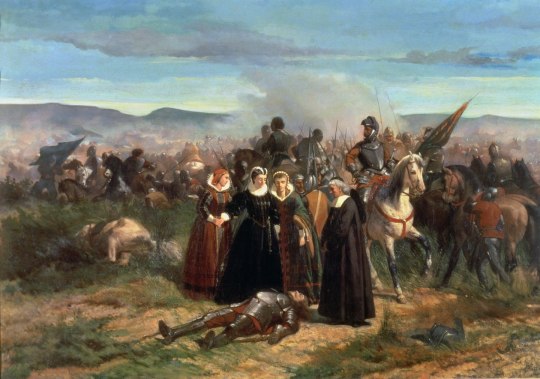
It was Mary's intention to avoid battle if possible, retiring instead to Dumbarton Castle, still held for her by John Fleming, 5th Lord Fleming. Here she would be in a virtually impregnable position, well placed to receive the expected reinforcements from the north, and then recover her hold over the country by degrees. With the intention of by-passing Moray she marched to Rutherglen Castle meeting loyal supporters and then on a wide circuit past Glasgow, intending to move by way of Langside, Crookston, and Paisley back towards the River Clyde, and then on to Dumbarton on the north side of the Clyde estuary.
Moray drew up his army on the moor close to the village of Langside, then several miles south of Glasgow but now well within the city. Kirkcaldy, observed that Mary's force was keeping to the south of the River Cart, the Regent's army being on the opposite bank. He ordered hackbutters (musketeers), mounted behind each of his horsemen, to cross the river. They took up positions among the cottages, hedges, and gardens of the village, on each side of a narrow lane, through which Mary's army must defile. Meanwhile Moray continued to deploy the rest of the army, the vanguard under the command of the Earl of Morton leading the march across a nearby bridge. The whole army then deployed the right around the village. No sooner was this complete than the Queen's vanguard, commanded by Lord Hamilton, began its advance through the village. The battle was now under way.
Mary's army was commanded by Argyll, who was to show little in the way of real military skill, seemingly hoping simply to push Moray aside by sheer force of numbers. George Buchanan wrote that Argyll fainted at one point, though this is almost certainly a rumour spread by his enemies. With her army now engaged, the Queen stood half a mile distance to the rear, close to Cathcart Castle on a mound since named as the Court Knowe. As Hamilton attempted to force a passage through Langside he was met by close fire from Grange's hackbutters. Many in the front ranks were killed, throwing the remainder back on those following, and adding to the general confusion. Hamilton pushed on, finally reaching the top of a hill, only to find the main enemy army drawn up in good order. Morton with the border pikemen advanced to intercept Mary's vanguard. Both sides now met in 'push of pike'. According to James Melville of Halhill the forest of inter-locked spears was now so thick that staves and discharged pistols thrown at the enemy simply rested on the shafts rather than falling to the ground.

Grange, whom Moray had allowed considerable leeway, continued to act with courage and distinction. According to James Melville, "the Regent committed unto the laird of Grange, the special care, as an experienced captain, to oversee every danger, to ride to every wing and encourage and make help where the greatest height was". The battle was now at its height and the outcome still doubtful, until Grange saw that the right wing of the Regent's army – consisting of the barons of Renfrewshire – was beginning to lose ground. He immediately galloped to the main battalion and brought reinforcements. This was done so effectively, and the counter-attack pressed with such force, that it broke the enemy ranks. Moray, who hitherto had stood on the defensive, repulsing Mary's cavalry, now charged at the main enemy battalion, the fight now joined all along the line. The Queen's men crumbled, the fugitives being closely pursued by a party of Highlanders. The Battle of Langside, which had lasted for some forty-five minutes, was over.
Langside was a colossal defeat for Mary. Only one of Moray's men was killed, whereas over 100 of Mary's men were lost, a figure that almost certainly would have been much higher but for Moray's decision to avoid further bloodshed by ordering a halt to the pursuit. Over 300 of Mary's men were taken prisoner, including Lord Seton and Sir James Hamilton and many of his followers. Mary and her escort rode off, first trying to reach Dumbarton Castle, but then turning south, eventually arriving at Dundrennan Abbey. From here she left for England, never to see Scotland again.
Mary crossed the Solway Firth to Workington on 16 May 1568 at night with twenty companions. This unexpected event provoked a dispute amongst the English border officials. She stayed her first night at the house of Heny Curwen.[ On the next day she moved to Cockermouth and was greeted by Richard Lowther, the deputy of Lord Scrope at Carlisle Castle. Lowther escorted Mary to Carlisle on 18 May. Meanwhile, the Earl of Northumberland who was at Topcliffe heard the news from Workington, which was in his jurisdiction. The Earl obtained a letter of authority from the Council of the North at York to be the Scottish Queen's host and to "let none of them escape." When the Earl arrived at Carlisle on 22 May, Richard Lowther defied him, and the Vice-Chamberlain of England, Francis Knollys, upheld Lowther's actions.
Over the next five years Mary's supporters in Scotland continued a civil war with the Regents of Scotland.
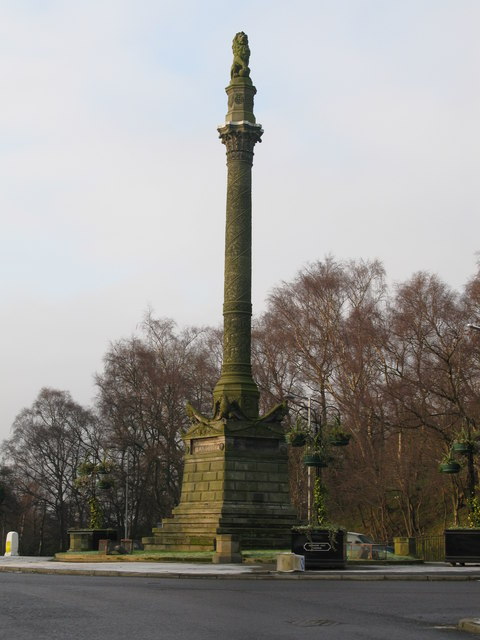
#history#military history#scotland#scottish#scottish history#queen mary#mary queen of scots#16th century#marian civil war
13 notes
·
View notes
Text

A Continental Army soldier as he would have looked at the battle of Brandywine, by Don Troiani.
#continental army#us army#history#military history#18th century#american revolution#american war of independence#revwar
86 notes
·
View notes
Text

Strong addition by @nevesmose

The Veteran by Ralph Hedley, 1896.
155 notes
·
View notes